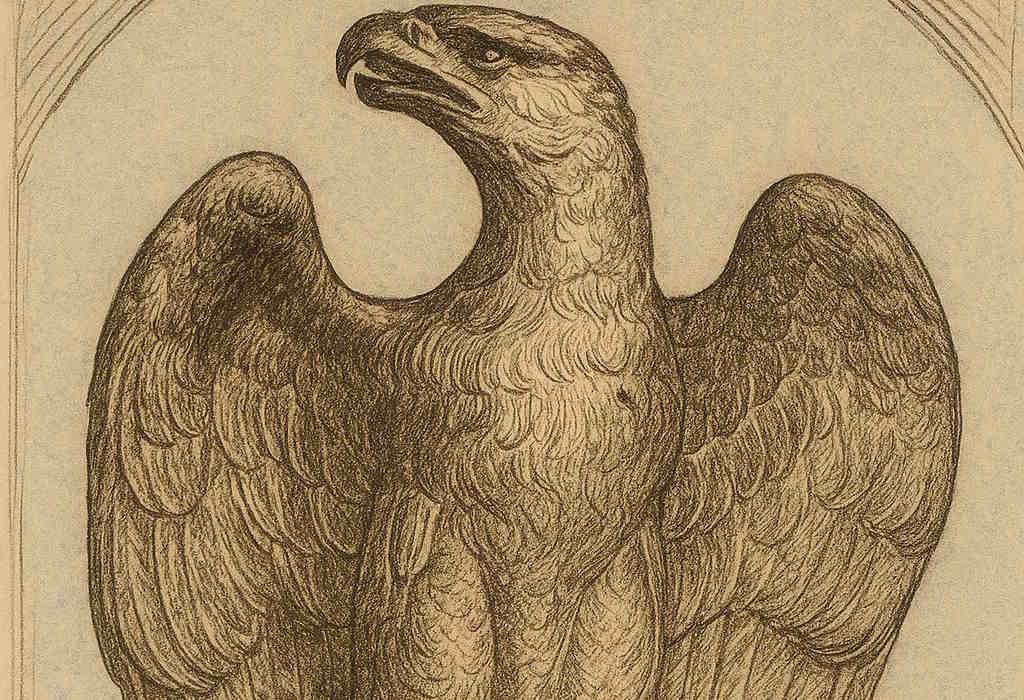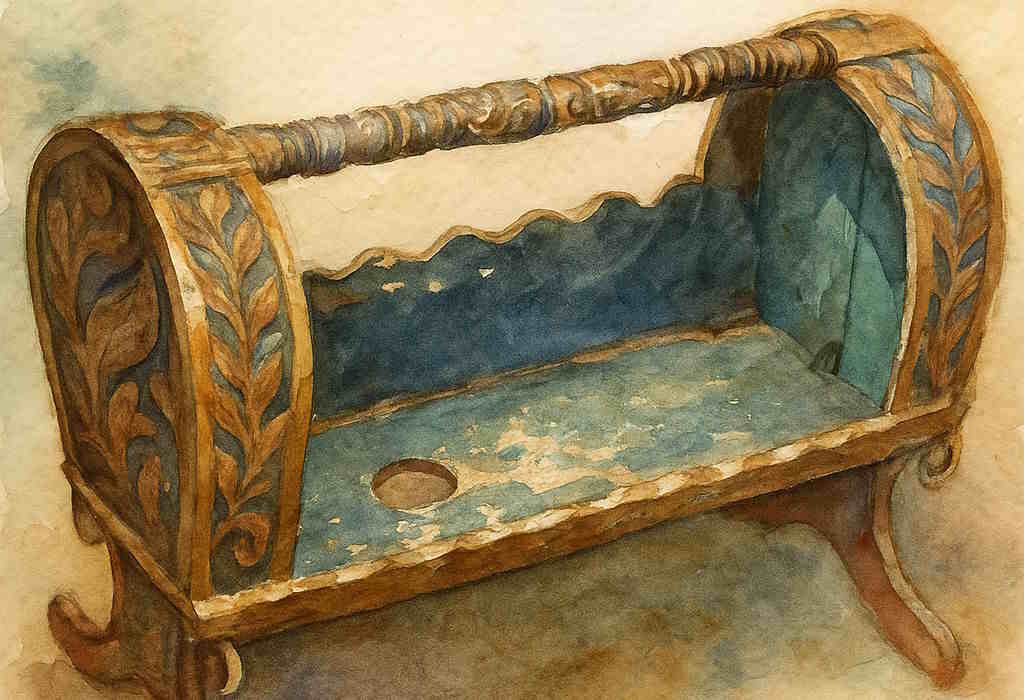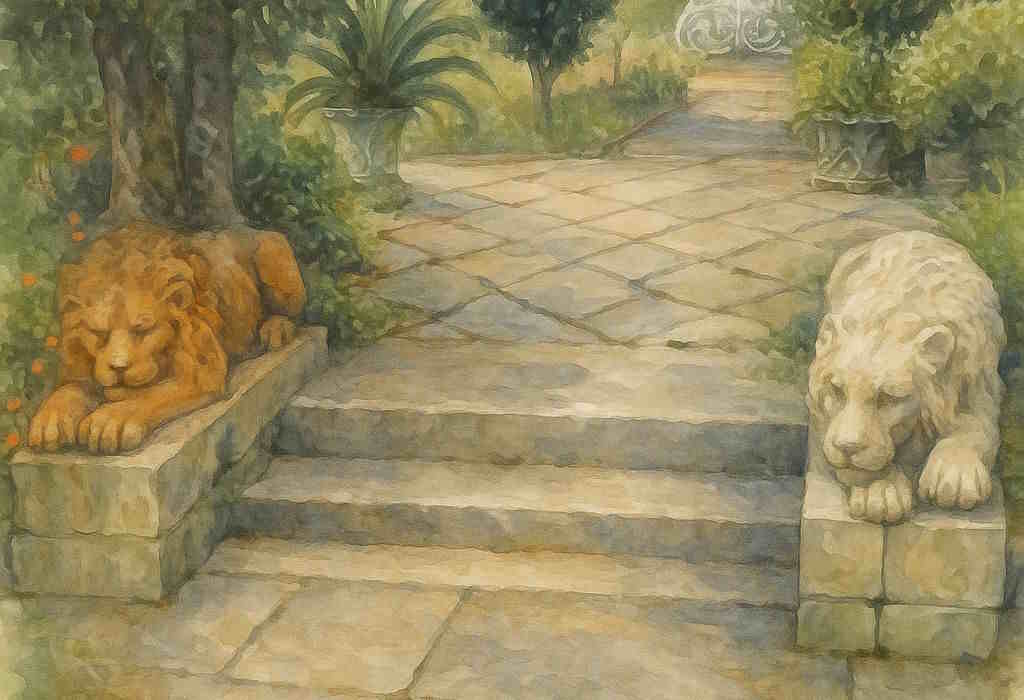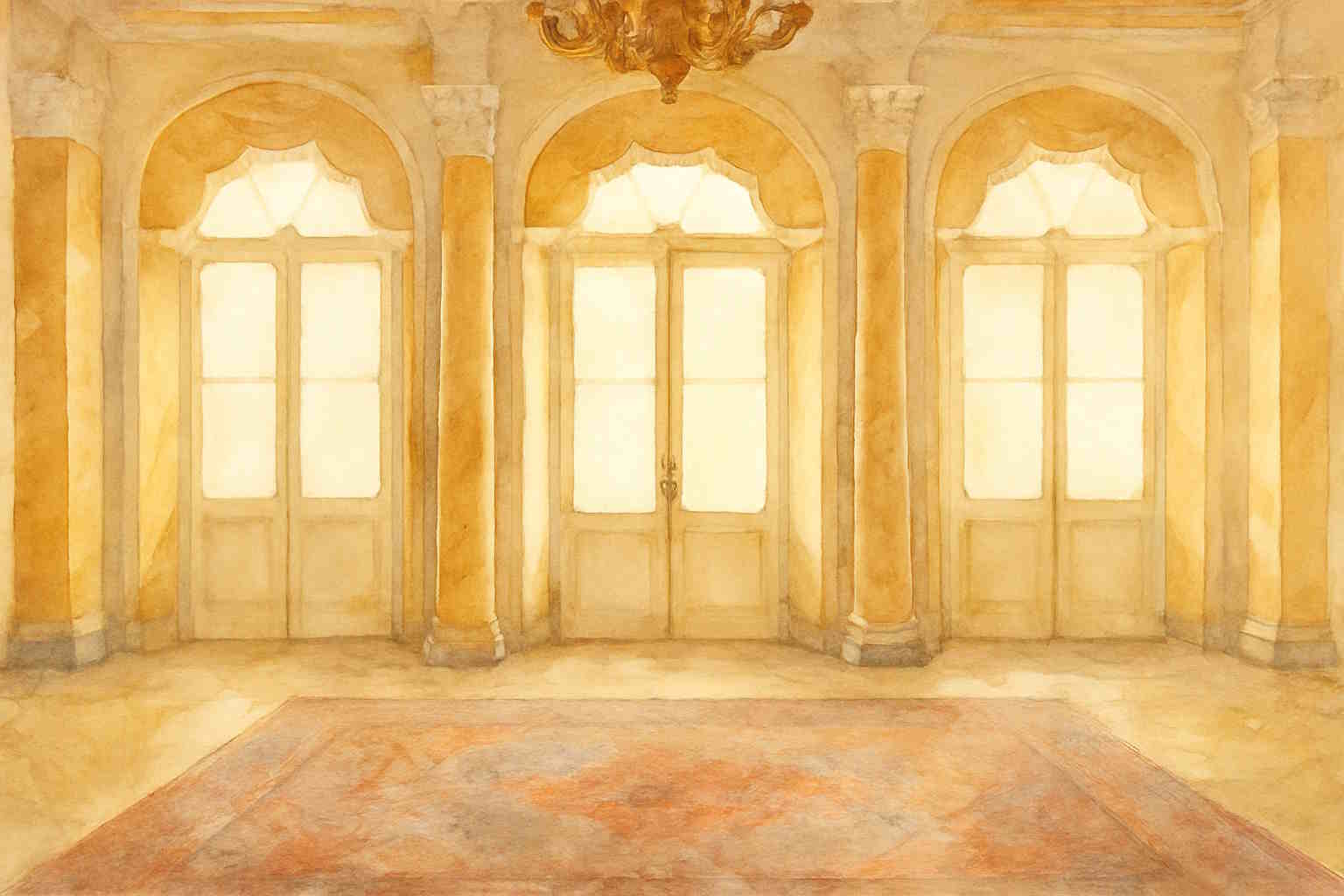
The listed furniture of the Conti Castle
Silent witnesses of history
The Conti Castle, a majestic residence facing the sea, does not merely impress with its architecture or terraced gardens. It holds within its walls and surroundings an exceptional collection of furniture listed as Historical Monuments, a true material memory of Corsica and its patrician families. Among them, three ensembles stand out for their uniqueness, history, and evocative power: the imperial eagle, the family cradle, and the lions of the Sébastiani Castle.
The imperial eagle in Corsican green marble
At the top of the castle's grand staircase stands a work of strong symbolism: a green marble eagle, wings fully spread, gazing at the horizon with unbroken majesty. Carved from a block of Corsican serpentinite, this bird of prey is not just an ornament. It embodies prestige, power, and imperial tradition, in a region deeply marked by the Napoleonic figure.
Its red marble base and noble pose evoke the grand decorative commissions of the 19th century. The eagle seems to guard the place, like a totem frozen in stone, a witness of past generations and the ambitions of an era. Listed in the Supplementary Inventory of Historical Monuments, it also symbolizes the care taken to preserve the island's movable heritage.
Heritage is not what we look at: it is what we pass on.
Yves Menasse, founding partner of the Conti Hotel Residence


The cradle of the Conti family: memory of a lineage
On the upper floor, hidden in a discreet room of the castle, lies an object of modest appearance but rare emotional power: an old cradle in painted and gilded wood, worn by time, weakened by the years, but still adorned with hand-carved floral decorations. It is said to have witnessed the birth of several children of the Conti family.
This cradle, though partially damaged, attests to the attention given to everyday objects, which have now become sensitive archives. Its form, its old paint, and the quality of the woodworking make it a unique piece, also listed in the heritage inventory. It is a silent, moving presence that evokes the domestic intimacy of a vanished world.
The lions of the Sébastiani Castle: a rescue story
In the castle's garden, placed on either side of the staircase leading to the secret garden, two terracotta lions catch the eye. They seem to have always been in their place. Yet, their story is unique.
These lions come from the former Sébastiani Castle in Ajaccio, the residence of Marshal Horace Sébastiani. The castle was partially destroyed during World War II, struck by a bomb. Left abandoned, it eventually lost its furniture and sculptures. It was Robert Menasse, a real estate developer and patron, who saved these lions from oblivion. Having acquired the Conti Castle, he transferred them to his garden, where they still stand today.
These lions are remnants of another place, another story, but they now continue the story of the Conti Castle. This act of preservation, at a time when the cultural value of objects was little considered, demonstrates rare awareness.


An open-air museum
The Conti Castle is much more than a place of welcome or pleasure. Through these objects — which sometimes only become noticeable after a careful look — an entire intimate and monumental history of Corsica is revealed. Each piece, each sculpture, each piece of furniture bears a memory: that of the artisans, the families, the dramas, the rebirths. It is a form of hospitality in itself: making space for History in the present.